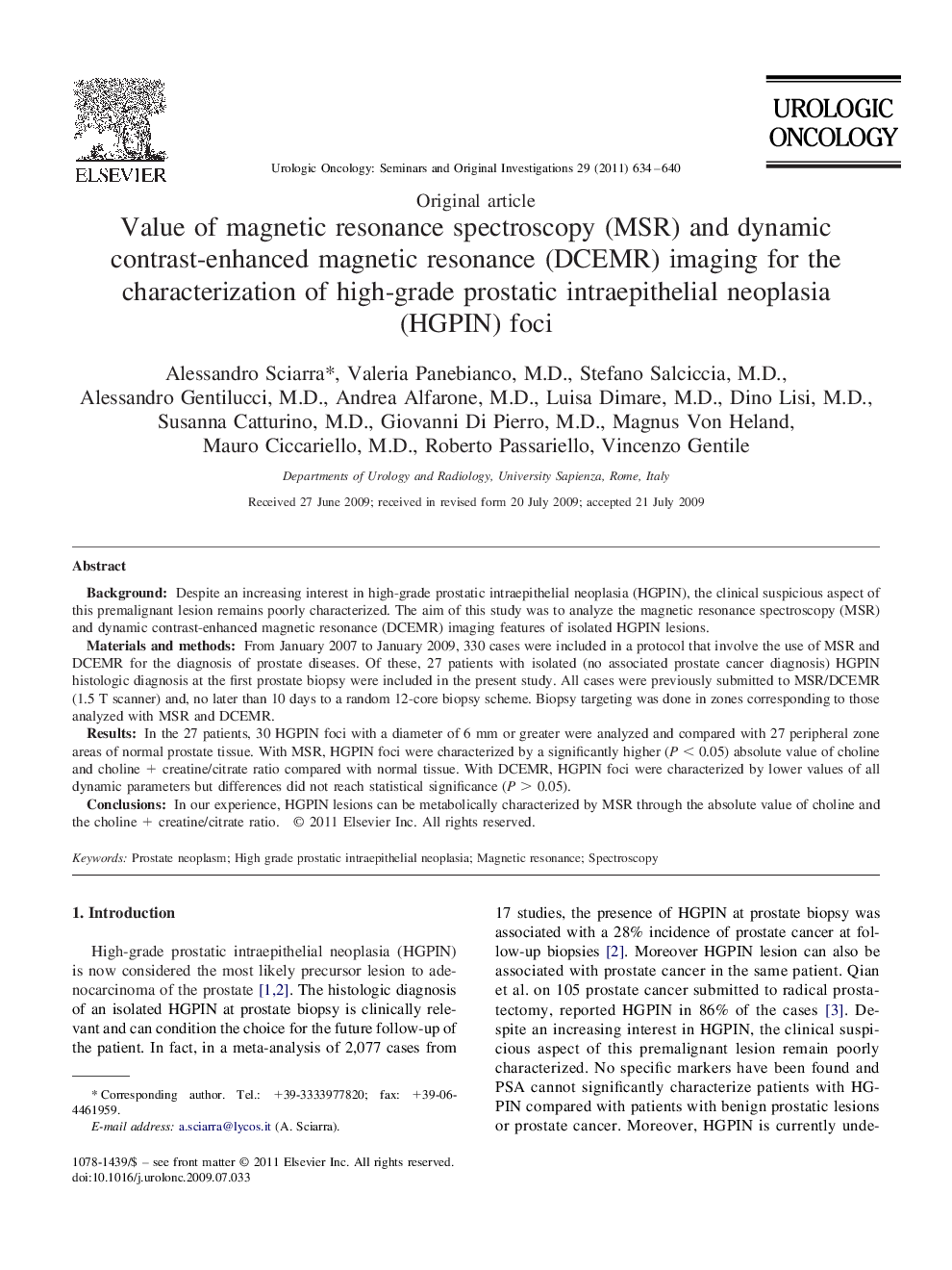| Article ID | Journal | Published Year | Pages | File Type |
|---|---|---|---|---|
| 4000298 | Urologic Oncology: Seminars and Original Investigations | 2011 | 7 Pages |
BackgroundDespite an increasing interest in high-grade prostatic intraepithelial neoplasia (HGPIN), the clinical suspicious aspect of this premalignant lesion remains poorly characterized. The aim of this study was to analyze the magnetic resonance spectroscopy (MSR) and dynamic contrast-enhanced magnetic resonance (DCEMR) imaging features of isolated HGPIN lesions.Materials and methodsFrom January 2007 to January 2009, 330 cases were included in a protocol that involve the use of MSR and DCEMR for the diagnosis of prostate diseases. Of these, 27 patients with isolated (no associated prostate cancer diagnosis) HGPIN histologic diagnosis at the first prostate biopsy were included in the present study. All cases were previously submitted to MSR/DCEMR (1.5 T scanner) and, no later than 10 days to a random 12-core biopsy scheme. Biopsy targeting was done in zones corresponding to those analyzed with MSR and DCEMR.ResultsIn the 27 patients, 30 HGPIN foci with a diameter of 6 mm or greater were analyzed and compared with 27 peripheral zone areas of normal prostate tissue. With MSR, HGPIN foci were characterized by a significantly higher (P < 0.05) absolute value of choline and choline + creatine/citrate ratio compared with normal tissue. With DCEMR, HGPIN foci were characterized by lower values of all dynamic parameters but differences did not reach statistical significance (P > 0.05).ConclusionsIn our experience, HGPIN lesions can be metabolically characterized by MSR through the absolute value of choline and the choline + creatine/citrate ratio.
